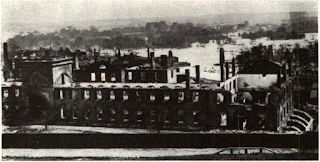Even before organization of the Tredegar Works of
The South was not, as is often parroted by grade
“Great as was the loss of the ships,” wrote Admiral
A contract for artillery destined for Fortress Monroe
Archer and refund to Washington the money paid to
An enterprise of considerable size, the Tredegar
That a West Pointer should resign from the Army
When a visitor in September, , strolled through
Nearby, a whole new plant for making cast steel,
The record of the Tredegar in the years that fol-
The South was not, as is often parroted by grade
“Great as was the loss of the ships,” wrote Admiral
A contract for artillery destined for Fortress Monroe
An enterprise of considerable size, the Tredegar
That a West Pointer should resign from the Army
When a visitor in September, , strolled through
Nearby, a whole new plant for making cast steel,
The record of the Tredegar in the years that fol-


Comments
Post a Comment